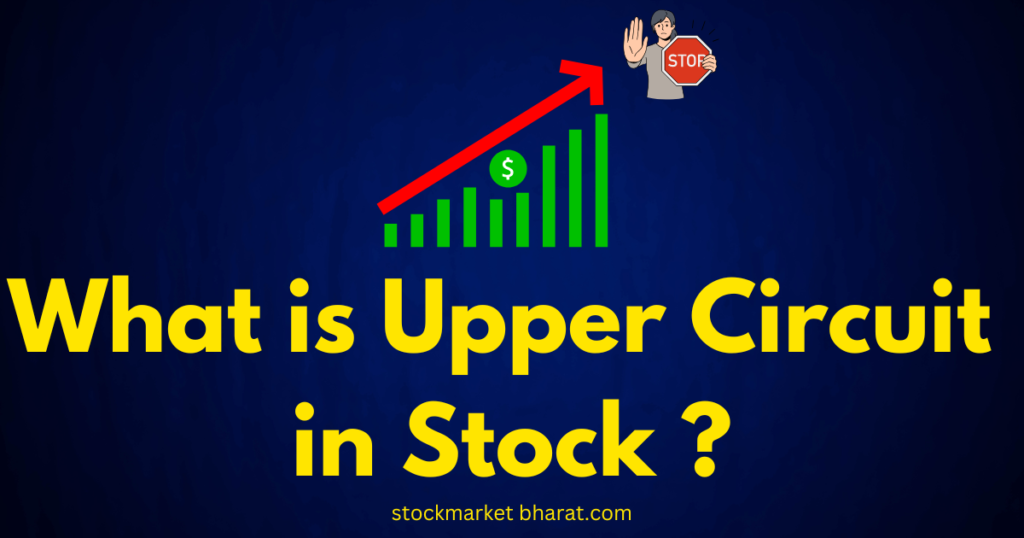What is Upper Circuit in Stock?
Stock markets are known for their volatility, and price fluctuations can be drastic within a single trading session. To ensure stability and prevent excessive speculation, regulatory bodies impose certain limits known as circuit breakers. One such important mechanism is the Upper Circuit.

Understanding the Upper Circuit in Stock Market
The Upper Circuit refers to the highest price level a stock can reach in a trading session before trading is temporarily halted. It is a regulatory limit set by stock exchanges like NSE (National Stock Exchange) and BSE (Bombay Stock Exchange) to prevent extreme price fluctuations. Once a stock hits its upper circuit, trading in that stock is either halted or allowed only within a controlled environment.
Why is the Upper Circuit Applied?
The concept of the upper circuit is implemented to:
- Prevent Excessive Speculation: Avoids sudden and irrational price surges due to speculation.
- Ensure Market Stability: Reduces the chances of stock price manipulation.
- Protect Retail Investors: Prevents investors from being trapped in volatile trades.
- Maintain Orderly Trading: Helps prevent panic buying or artificial price inflation.
How is the Upper Circuit Determined?
Stock exchanges define circuit limits based on various factors, including market capitalization, liquidity, and volatility. In India, circuit limits typically range between 2%, 5%, 10%, 15%, or 20%, depending on the stock category.
- Large-cap stocks generally have lower circuit limits (5% to 10%) to maintain stability.
- Mid-cap and small-cap stocks may have higher circuit limits (10% to 20%) due to their inherent volatility.
- Highly liquid stocks often have broader circuit limits compared to illiquid stocks.
What Happens When a Stock Hits Upper Circuit?
- No further buying orders can be placed beyond the upper circuit price.
- Sellers may continue to sell, but buyers cannot bid higher.
- If demand remains high, the stock stays locked at the upper circuit price.
- Trading may resume after a cooling-off period if exchange rules permit.
Example of an Upper Circuit Scenario
Suppose Stock ABC is trading at ₹100 with a 10% upper circuit limit. If strong demand drives the stock price up by 10% to ₹110, no further buy orders will be accepted beyond ₹110. The stock remains locked unless selling pressure arises or the exchange allows a revision.
Upper Circuit vs Lower Circuit
| Feature | Upper Circuit | Lower Circuit |
|---|---|---|
| Definition | Maximum price a stock can reach in a session | Minimum price a stock can drop to in a session |
| Effect | Stops excessive price increase | Prevents panic selling |
| Investor Impact | Encourages profit booking | May trigger panic selling |
Can You Buy a Stock That is in Upper Circuit?
Yes, but it is difficult. Since demand is high and no sellers are willing to offer shares below the upper circuit price, it often results in zero available quantity for buyers. Investors trying to buy such stocks need to place their orders at the circuit price and wait for availability.
Key Takeaways
- Upper Circuit is a price ceiling beyond which a stock cannot trade in a session.
- It helps regulate market volatility and protects investors from extreme fluctuations.
- Circuit limits are set by exchanges like NSE & BSE and vary across stocks.
- Buying a stock in upper circuit is challenging due to high demand and limited sellers.
Final Thoughts
Understanding the concept of Upper Circuit in stock trading is crucial for investors, especially those dealing in volatile stocks. While it can indicate strong buying interest, investors should conduct thorough research and avoid impulsive trading decisions based solely on circuit limits.
Disclaimer: This article is for informational purposes only. Investors should consult a SEBI-registered financial advisor before making investment decisions.
WORTH A READ:difference-between-listed-and-unlisted-company